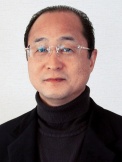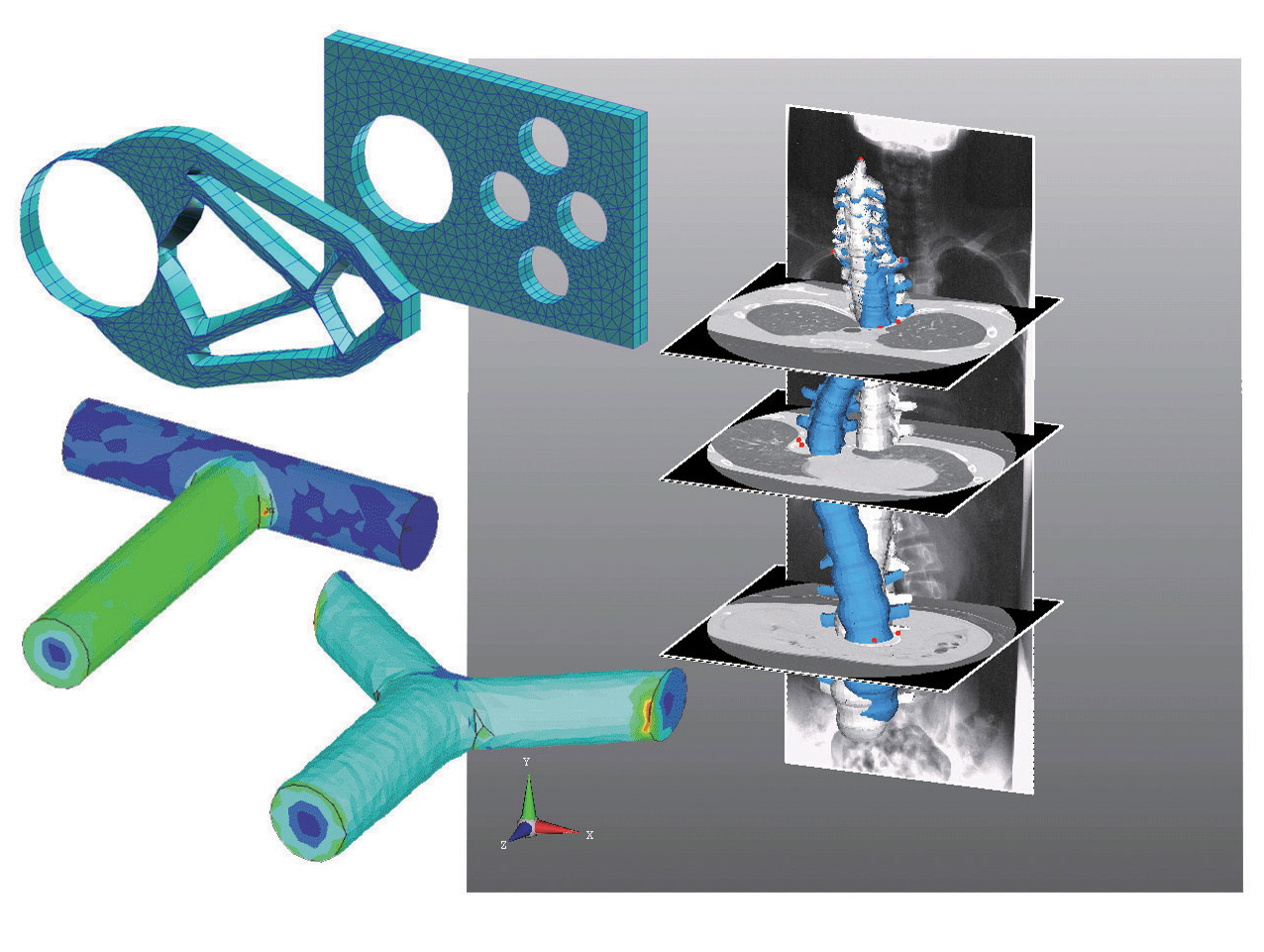Comprehensive List of Researchers "Information Knowledge"
Department of Complex Systems Science
- Name
- AZEGAMI, Hideyuki
- Group
- Complex Systems Computation Group
- Title
- Professor
- Degree
- Dr. of Engineering
- Research Field
- Applied Mathematics / Mathematical design / Shape Optimization / Biomechanics

Current Research
Mathematics of Modeling and Optimization
OUTLINE
Most macroscopic phenomena in nature and artificial products can be represented with mathematical equations by simplifying phenomena in some senses. Phenomena seen or felt in daily life, such as the deformation of solids and fluids or the propagation of sound and heat, are expressed with solutions to boundary value problems of partial differential equations. Numerical solutions to these problems have come to be obtained by the progress of computer technology and theory of numerical analysis. These results are visualized by the progress of computer graphics and have come to be widely recognized as computer simulation.
FROM THE SIMULATION OF PHENOMENA TO THE OPTIMIZATION OF PHENOMENA : While recent progress of computer simulation has aimed to faithfully realize the phenomena, our laboratory has been tackling the control or optimization problems of shapes and material to realize the wished for phenomena.
TYPICAL PROBLEM
A simple shape optimization problem can be shown as follows. Let ![]() be a
be a ![]() -dimentional bounded domain. Here, we choose a map
-dimentional bounded domain. Here, we choose a map ![]() representing domain variation as design variable. If
representing domain variation as design variable. If ![]() is given, a phenomenon in
is given, a phenomenon in ![]() is determined as the solution
is determined as the solution ![]() to
to
![]() ,
,
where ![]() is a given function. Moreover, we defined
is a given function. Moreover, we defined
![]()
as cost functions. Baed on the definitions, we call finding problem of ![]() such that、
such that、
![]()
a shape optimization problem. For the problem, we proposed a solution based on the gradient method in function space.
APPLICATIONS TO PRODUCT DESIGN
For instance, a shape optimization problem of a solid that minimizes deformation under external force can be solved by setting the elastic equations for the boundary value problem, the external work for the objective functional, and adding a volume constraint. Shape optimization of a solid in a flow field and similar problems can be solved in the same way. For these fundamental shape optimization problems, our method has been put to practical use in product design (see left side of the figure).
APPLICATIONS TO MEDICAL CARE AND WELFARE
It is not rare that macroscopic phenomena involve the shapes of living bodies including human beings. We are promoting the use of computer simulation techniques and optimization to understand the shapes of living bodies, the mechanisms of diseases, and to improve medical treatments and the design of welfare instruments.
RECENT TOPICS
1. On shape derivative around singular point in shape optimization problem
2. Shape optimization for brake squeal
3. Shape optimization of electrostatic capacitive sensor
4. Damage identification in building using vibration eigen pair
5. Shape optimization for flow field by particle method
6. Shape optimization for a link mechanism
7. Construction method of numerical models for individual patients based on medical data
FUTURE DEVELOPMENTS
To develop studies on the modeling and optimization of phenomena, when pursuing such principles, mathematical rigor is inquired ; when considering practical uses, engineering conveniences are required, and when aiming for medical care and welfare applications, we have to comply with medicine's demands. To achieve such objectives, collaboration with specialists working in different disciplines is crucial. We contemplate a great deal of all sorts of encounters.

Figure : Optimization of elastic body and flow field/Individual modeling of scoliosis
Career
- Hideyuki Azegami received a Dr. of Eng. in Mechanical Engineering from Tokyo Univ. in 1985.
- He was a research assoc. of the Univ. of Tokyo in 1985, a research assoc. from 1986 to 1989, a lecturer from 1989 to 1991, and an assoc. prof. from 1991 to 2003 of the Toyohashi Univ. of Technology.
- Since 2003, he has been a prof. at Nagoya University.
Academic Societies
- Japan Society for Industrial and Applied Mathematics
- Japan Society of Mechanical Engineers
- Society of Automotive Engineers of Japan
- Japanese Scoliosis Society
- Japan Society for Computational Engineering and Science
- International Association for Computational Mechanics
- International Society for Structural and Multidisciplinary Optimization
Publications
- Shape optimization of continua using NURBS as basis functions, Structural and Multidisciplinary Optimization, 47(2), 2013, pp. 247-258.
- Error analysis of H1 gradient method for topology optimization problems of continua, JSIAM Letters, 3, 2011, pp. 73-76.
- Regular solution to topology optimization problems of continua, JSIAM Letters, 3, 2011.01, pp. 1-4.








